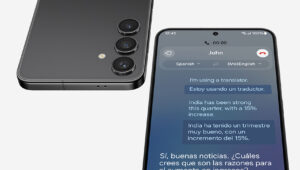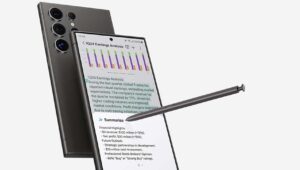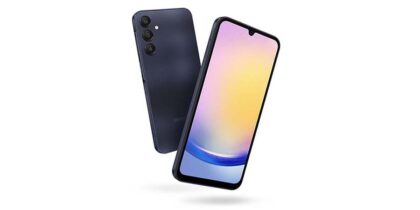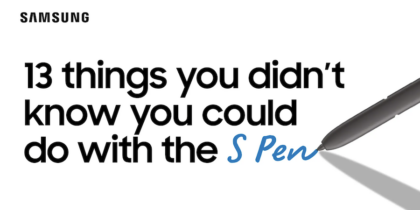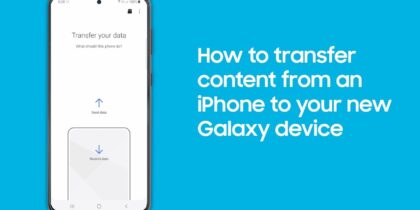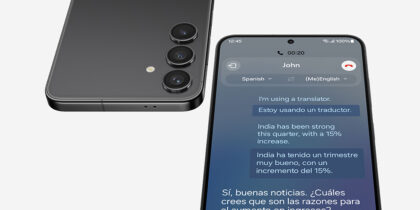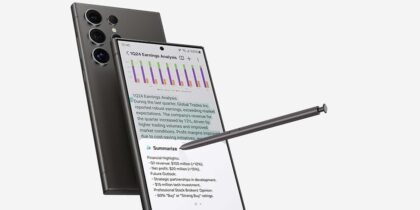In this News Insight, Cloud Pro weighs in on what makes a good custom application. If you are reassessing your business app strategy, download this guide for seven key steps. —Samsung Insights editorial team
When we think about apps, we usually think about what we can see on our smartphones. In reality, that only scratches the surface of a highly lucrative industry where software is changing the face of business.
There are countless bespoke apps out there commissioned by organisations who need tools that can help people do their jobs that bit more easily.
Every part of an organisation can benefit from bespoke apps, from logistics to human resources, from customer or user services to resources management. But getting an app that’s fitted precisely to the organisation’s needs isn’t easy. The whole point of ‘bespoke’ is that it is tailored, not ‘off the shelf’ or ‘one size fits all’. The tailoring is the skill, and it’s where bespoke apps succeed – or fail.
Design thinking
Nick Ford, chief technology evangelist at Mendix, a software platform that allows apps to be created without coding and whose clients include Kwik Fit, ING and War Child, says there’s no “silver bullet” when it comes to developing your own app, but that “taking a design thinking approach can set you off on the right path”.
Design thinking is absolutely central to the whole process of creating effective bespoke apps. Ford tells Cloud Pro that it “ensures the finished app is solving the right problems through keeping the end-user at the heart of the entire design and development process”.
“That might sound basic, but you’d be amazed at how many businesses develop apps that fail to identify or address the right problems,” he adds.
In practice, that means making sure the people who are going to use the bespoke app are involved in creating its look, its feel, and the services offered. Achieving this requires technical teams to take a step backwards, work alongside specialists in a user involvement, and figure out how to implement user requirements in the app’s design.
Keep on talking
Importantly, users need to be involved throughout the whole development cycle – and beyond. It’s no good just asking them what they want at the start, going away and asking the tech teams to produce an app, presenting it to users for a short period of testing before it is unleashed, making a couple of changes, and then retiring to focus on the next project.
Eveline Oehrlich, director of market strategy at New Relic, a company that specialises in monitoring the efficiency of apps, tells us: “As a company’s custom app usage grows, it can be increasingly difficult to ensure these apps deliver consistent quality and reliability. If left unchecked, there’s a risk that there will be a negative impact on employee productivity, customer and partner satisfaction, and, ultimately, the company’s bottom line”.
Nick Ford adds that usually “the IT team is so separated from the wider business that it’s impossible for the right conversations to be had at the right time. When apps are developed in isolation, there’s no room for snags to be caught and dealt with early”.
Avoiding avoidance
In the end, the ultimate goal in producing a bespoke app is to create something people will use. Fail to take the design thinking approach, and fail to keep end users involved throughout the process, and an organisation is simply forking out more money on bespoke for the same experience offered by an off-the-shelf product.
As Michael Macauley, general manager at Liferay, tells us: “If workers feel they’re fighting against an application, they are more likely to either try and circumvent it, or give up on that process entirely.”
Moreover, for Liferay, whose clients include T-Mobile, Airbus and Domino’s, this is about more than just apps. The design thinking approach needs to extend into every aspect of digital life – web, apps and beyond. Consistency is all.
To achieve the required level of user-friendliness requires what Nick Ford refers to as a ‘feedback loop’ – a continuous process of gathering user feedback, making its collection “part of the environment”.
“[This means] users can take an active role across the complete application lifecycle – so the finished app works for everyone,” he explains.
Just like tailored clothing that gets taken in here and let out there, as time goes on, an app needs to respond to user needs throughout its life. And that, after all, is the point of a bespoke app. As Macauley put it, “the ultimate aim of good design should be ease of use”.
This article was written by Sandra Vogel from Cloud Pro and was legally licensed through the NewsCred publisher network. Please direct all licensing questions to legal@newscred.com.
Reassess your business app strategy with this seven-step guide from Frost & Sullivan.
![]()


